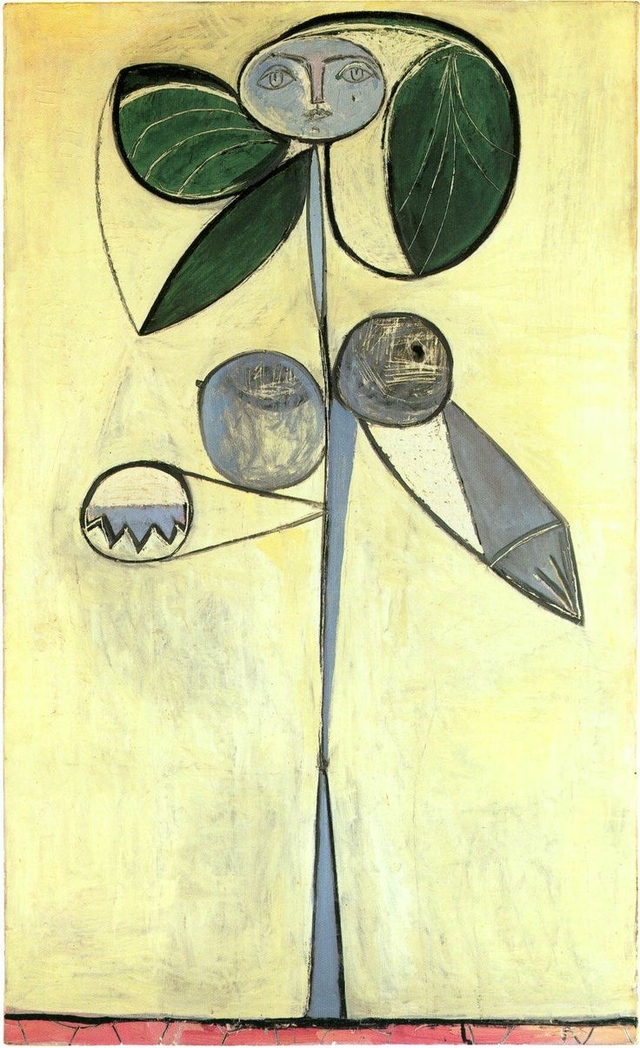On Understanding Abstract Portraits: Applying Cognitive Semiotics and Psychophysiological Symbolism
By
2014, Vol. 6 No. 11 | pg. 1/3 | » AbstractExpression through artwork, representation, and interpretation are significant aspects of our human experience and key elements of the discipline of Aesthetics. Rarely do these concepts integrate a social science perspective into their approach. This is the goal of the present thesis: through discussion and literature review it aims to produce integrative theory that explores the social reality of artworks. Its parameters are set at the bounds of abstract expressionism with a focus on abstract portraits. This research reviews a wide variety of academic sources – including Social Constructivism, Communications Theory, Interactionism, and Aesthetic Cognitivism – with the purpose of better understanding the social aspects of artworks and the ways in which we cognitively and behaviorally engage them. Artworks are a peculiar social phenomena, so peculiar in fact, that it may seem difficult for some to even consider them social. It may be argued that they are social tools or artifacts, whilst many others (for example, in the firled of Aesthetics) treat artworks with a sort of unreachable subtlety. Exploring the ways in which we interact with such artworks and find expressive meaning in them is the general objective of this essay. To aim a project such as this at the realm of artworks as a whole would be a gargantuan task, so, this essay will hold abstract expressionism, and more specifically, abstract portraits as the primary focus. By focusing on abstract portraits we can explore the social-psychological properties of their core objectives: achieving a level of accurate, expressive, and informative depiction of the subject. According to John Dilworth's Double Content Theory of Artwork (2005) artworks necessarily involve two aspects as a part of their ontology: a representation of subject matter and commentary on that subject matter as conveyed through medium content.Theoreticians such as Monroe Beardsley and Noel Carroll, as well as Aesthetic Contextualists, suggest the importance of sociocultural influence on artworks as well. These elements are essential to the formation of an artwork as an emotionally expressive communicative display insofar as they influence our developmental selves and the ways in which we draw out meaning from form, generally. The social-psychological aspects come further into play when we look at two statements on the nature of artworks and artistic encounters. First, Noel Carroll (1992) argues, “[Artistic encounters are]...a conversation between artist and viewer.” Carroll has also made assertions on the emotionally communicative aspect of artworks by way of the medium in his essay “Movies, the Moral Emotions, and Sympathy” (2010). This quote quite excellently refers to socioculturally shared methods of conceptualizing our emotional expression, In it, he states that: “[Most of us share] certain emotional domains...which different cultures craft sometimes diverging but also often converging paradigmatic emotional response patterns.” These assertions are indicative of the importance of communication based on shared sociocultural meaning between the artist and the viewer. The former of Carroll's quotes serves as the most concise and literal analogy of the general idea this essay explores: the social reality of abstract artworks. Being that we are siding with Carroll, it is important to address his opponent on this issue, Daniel Nathan. In his 2006 essay “Art, Meaning, and Artist’s Meaning” Nathan argues that artistic encounters and conversation are simply too different from each other to make the analogy Carroll is suggesting. He goes on to assert that we would be mere observers of such a conversation, not participants, as we ought to be. However, it isn't wholly accurate to take such a narrow stance on human social interaction. Samuel Bois, an authority on Semantics, asserted in “The Art of Awareness” (1966)that communication is not so narrow as to be strictly an oral exchange of objective information between two persons but rather the encounter of two semantic reactionary socioemotional Selves. This encounter, or interaction is key; influential symbolic interactionist Herbert Blumer (1962) has asserted that “...human interaction is mediated by the use of symbols and signification, by interpretation or by ascertaining the meaning of another's actions.” We can apply this to artworks by again looking at the Aesthetic theory of John Dilworth (2005), which asserts that artworks are indicative of the artist's self and intentions through the artwork's “medium content.” He argues that to encounter an artwork is to view the medium content which is backwardly indicative of the creative actions and behaviors of the artist in creating the piece. The key word here is action. “Action Painting” is seen as a key component of abstract expressionism, pioneered by painters such as Franz Kline and James Brooks, according to Harold Rosenberg's “The American Action Painters.” This ancillary style takes emphasis away from typical imagery and instead places it on energy, spontaneity, and the action of painting itself.This tends to lead towards the inclusion of certain expressive formal aspects in the work that are distinctly abstract and instrumental as emotional identifiers, which we will explore later. This mode of expression is said to tap into and express one's subconscious. In social-psychological terms we can understand this as a means of nonlinear communication, facilitated through medium-action, through which expressive meaning surfaces in a way that is intentional, but not wholly deliberate or meticulous. Thus, artists signify emotional meaning through the medium. They express humancontent through formalcontent – rendering Carroll’s approach to artistic encounters, as conversational, sound insofar as we might interact with certain works socially, on the basis of signification and interpretation of action. In order for this to occur, however, we must first be able to approach the work as a valid social and emotional stimulus. Numerous social-psychological studies have been conducted in regards to bodily, facial, and otherwise recognizable social responses to (and instances of displayed) emotional stimuli (Ekman, 1972; Friesen, 1972). Findings have generally concluded that we engage in socially communicable behaviors even when isolated, there is never a time or place in which we aren't behaving and operating as social beings. So long as there is a relevant stimuli with which we may interact, we might engage in socioemotionally-informed socially communicable behaviors and interactions. Such displays and response-displays correspond with (and give rise to) instances of emotional cognition stemming from the socioemotional Selves of the participants. Further, it is concluded that we make social interactants out of non-humans - objects, plants, weather, (and as this essay would assert, artworks) - for the purpose of interacting with our socioemotional Selves (Fridlund, Duchaine 1996). This is to say that artworks may serve as valid social stimuli which we, as viewers, then interact with as emotionally-informed cognition engages to produce an emotional appraisal in response to that expressive display. In what ways and by what means are expressiveness and recognition in abstract portraits achieved? Our cognitive structures, which guide how thoughts and ideas are organized to an individual, come to action when interacting with an abstract portrait, and are manifest in our interpretation of the work in ways that are dependent on our interpretation of the work's formal content, the context of the encounter, the artist’s intentions, and the artist's use of various means of expression through the medium. Artistic expression and recognition of artistic content is rooted in various essential social-psychological theories, namely; Social Constructivism and more generally, Interactionism. The former holds that all understanding of experience is socially constructed, but different communities can construct different interpretations of their shared experience. The latter asserts that on the micro level meaning is produced through the interactions of and between individuals.Continued on Next Page » Suggested Reading from Inquiries Journal
Inquiries Journal provides undergraduate and graduate students around the world a platform for the wide dissemination of academic work over a range of core disciplines. Representing the work of students from hundreds of institutions around the globe, Inquiries Journal's large database of academic articles is completely free. Learn more | Blog | Submit Latest in Philosophy |



















